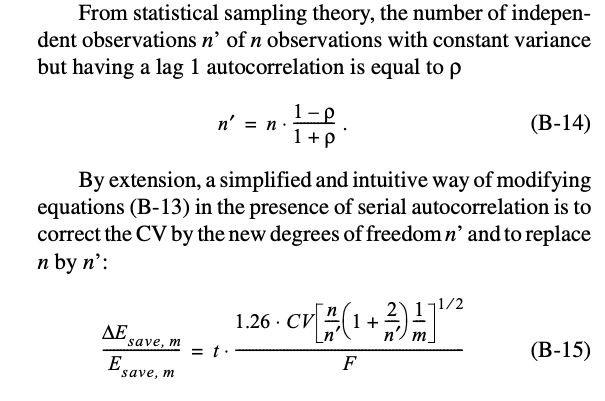I interpret equation B-15 to mean this:
- If you have 365 samples of pre-retrofit data: n = 365. (Example: daily meter data, one year)
- If you have 8760 samples of pre-retrofit data: n = 8760 (Example: hourly meter data, one year)
- If you have 30 samples of post-retrofit data: m = 30 (Example: daily meter data, one month)
Recall that the assumption with this section is that you have applied the pre-retrofit model (based on the n samples) to the actual weather data in the post-retrofit period. I think your question indicates the same interpretation as I have.
Regarding getting to this equation: it seems to come from some of the references like Reddy and Claridge, 2000, Uncertainty of "Measured” Energy Savings from Statistical Baseline Models, appearing in ASHRAE HVAC&R Research. The derivation refers to "numerical trials" so that may come out differently based on the source of the numbers used in said trials. That said, it also reads "m = number of periods (hour, day, or month) in the post-retrofit period," so that supports our interpretation that it is meant to be generally applicable, anyway.
In the wild, I've seen a couple of variations on this formula:
- In place of the magic number 1.26, ECAM uses a quadratic expression, I think.
- Authors of RMV2.0 have a comment on Github issue #7 that explains why they dropped the uncertainty calcs, based on equation B-15, for their TOWT model.
Since there appears to be some dissent, it seems prudent to use this equation with caution. Annex B glosses over lots of details regarding uncertainty, and I think a user's guide would be very helpful.






